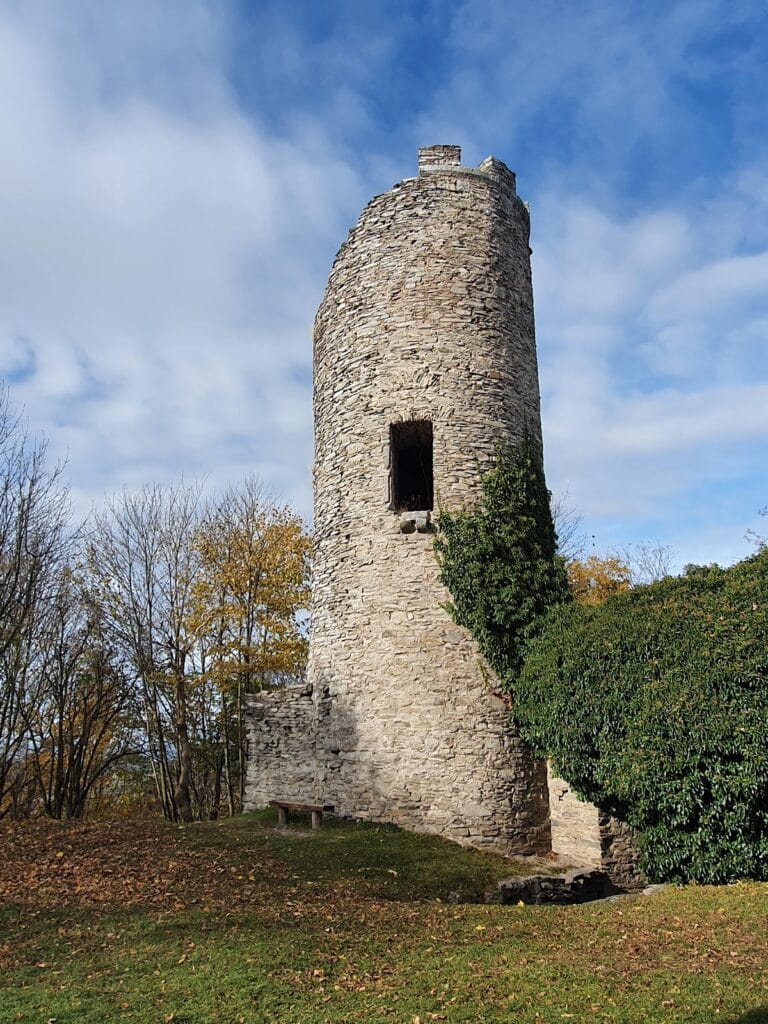Burg Brandenstein: A Medieval Hill Castle in Germany
Visitor Information
Google Rating: 4.5
Popularity: Low
Google Maps: View on Google Maps
Official Website: www.burg-brandenstein.de
Country: Germany
Civilization: Unclassified
Remains: Military
History
Burg Brandenstein is a medieval hill castle situated near the municipality of Schlüchtern in Germany. It was constructed by Germanic nobility during the Middle Ages to assert control over the surrounding lands and oversee their territories.
The castle was first mentioned in historical records in 1278 as belonging to Hermann von Brandenstein. Its origins trace back to sometime after 1243 when a branch of the Steckelberg family likely established it. The primary purpose was to secure their Vogtei, a form of local advocacy or guardianship over nearby lands.
Throughout the 14th century, Burg Brandenstein changed hands multiple times. In 1307, it was granted as a fief by the bishopric of Würzburg to the counts of Rieneck-Rothenfels before passing in 1316 to Ulrich IV of Hanau. Under Hanau’s rule, the castle served as an administrative center from this point forward.
From 1424 until 1540, the property was pledged and eventually held as a fief by the lords of Eberstein. During this era, the castle expanded, especially in the 15th century. However, in 1522 it was besieged and captured by imperial troops led by Count Georg II of Wertheim under orders from Emperor Charles V. This military action was a response to raids conducted by Mangold II of Eberstein. Following 1540, the castle underwent renovations transforming it into a Renaissance-style residence suited for noble habitation rather than solely defense.
In the 17th century, during the tumultuous period of the Thirty Years’ War, Burg Brandenstein provided shelter for local villagers fleeing violence. The castle’s strategic location and robust construction made it a refuge amid conflict.
By the early 18th century, ownership shifted due to financial arrangements. In 1717, the Amt, or administrative district, with the castle was pledged by the House of Hanau to the Landgrave of Hesse-Kassel, securing a loan of 100,000 gulden linked to territorial debts. Following the death of Count Johann Reinhard III in 1736, the castle formally passed to Landgrave Friedrich of Hesse-Kassel. It subsequently belonged to the Electorate of Hesse after 1803 and was annexed by Prussia following the Austro-Prussian War in 1866.
In 1895, the castle returned to private ownership when Gustav von Brandenstein, an infantry general from Württemberg, purchased it. Gustav undertook renovations shortly thereafter. His descendants maintained the estate, and in 1909 Alexander von Brandenstein married into the Zeppelin family, adopting the combined noble title Count Brandenstein-Zeppelin granted by King Wilhelm II of Württemberg. The property remains in the family and is currently owned by Constantin von Brandenstein-Zeppelin.
Remains
Burg Brandenstein is classified as a Höhenburg, meaning a hill castle. It occupies a southern spur of the Escheberg ridge at an elevation of 325 meters, overlooking the Kinzig valley below. This hilltop position provided extensive views and strategic advantage. The terrain surrounding the castle consists largely of dense forest, except for an orchard meadow on the southern slope that adds to the estate’s landscape.
The castle’s historic layout reflects developments from its founding in the mid-13th century through expansions in the 15th century and its Renaissance transformation after 1540. These successive building phases are evident in masonry and structural features visible today. The walls and internal buildings combine medieval defensive construction with later residential alterations typical of Renaissance noble residences.
A noteworthy modern feature near the castle is the Brandensteintunnel, a railway tunnel 144 meters long constructed in 1872 through the hill on which the castle stands. Positioned roughly 100 meters before the castle along its access road, the tunnel represents industrial adaptation of the area but is distinct from the medieval complex.
The castle grounds include a former horse stable converted into a museum since 1970. This building now houses a collection of over 800 historic wooden tools and utensils, ranging from simple hand-carved clothespins to kitchen implements like flour sack beaters. The exhibition space has been expanded to include the castle courtyard, integrating the outdoor area into the display environment.
Above the stable, on the upper floor, there is a dedicated collection focusing on Philipp Franz von Siebold, a prominent physician and renowned researcher of Japan who is an ancestor of the current owners. This exhibit highlights his life and scientific contributions.
Nearby, visitors can find a forest exhibition featuring artworks crafted from natural materials and a botanical trail. The trail educates about regional tree and plant species, enhancing understanding of the local environment surrounding the castle.
Photographic documentation and on-site observations confirm the castle’s masonry remains in well-preserved condition, with structural components representative of both medieval fortifications and Renaissance residence features. The conservation of these elements provides tangible insight into the site’s layered architectural history.










